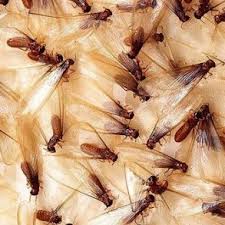
According to the United States Department of Agriculture, estimated expenditures on termite damage and associated repairs, as well as termite inspections, termite extermination and other termite control measures or expenses, sometimes total as much as $7 billion per year. If a termite colony has gone unchecked for years, long-term termite damage may not only cost individuals a significant amount of money to repair but may also jeopardize the overall value of their property. Fortunately, routine termite inspections can help prevent you and your family from experiencing the financial and emotional strain that termite damage can cause. Professional assessments conducted by the termite control experts at Eliminate ‘Em can also help uncover and resolve a termite problem quickly, so that any repairs due to termite damage may be less extensive and expensive.
REPAIRS TO HELP PREVENT TERMITE DAMAGE
People often think about repairing damage in the aftermath of a termite discovery and subsequent termite control treatment. However, in addition to the preventative maintenance that pest control specialists can provide, property owners can make other repairs to existing issues that may be making their buildings attractive to termites. While some of these repairs may cost money now, they may help you avoid the greater expenses associated with termite infestations and damage in the future.
- Fix leaky faucets, plumbing and other fixtures that frequently have water condensation, drips or pools. Termites need moisture, so while the faucet drip or bucket under a basement pipe may not seem like an issue, it can actually invite termite interest.
- Repair or update ventilation. Humid areas are appealing environments for termites. Make sure that circulation and regulation systems are operating effectively and checked regularly.
- Remove items from previous repairs or projects. Leftover wood from a fence project or bags of old papers may not be in your way, but termites consume wood and other cellulose-containing materials such as drywall or paper. Even if these materials or other piles of wood and yard debris are located away from the house, they may still attract termites. Additionally, termites in the yard may eventually make their way into the home or result in termite damage to other structures on the property like garages or raised garden bed frames.
- Replace or install drainage features so that water doesn’t collect around your home’s foundation. In addition to termites, excess moisture or pooling water attracts other pests, like mosquitoes and cockroaches.
- Reinforce seals around windows and doors and fill any cracks along the foundation, walls or entry points for assorted utilities. In conjunction with a routine inspection, a professional termite control team may also be able to provide these exclusion and abatement services, which can help safeguard your home from termite damage or repair needs caused by other pest or wildlife intruders.
REPAIRING EXISTING TERMITE DAMAGE
Initial evidence of damage, such as small holes in the wall or tunnels in wood, are often the first signs of termites that people discover. However, the full extent of termite damage is often only revealed once their invasion has been identified. The damage that can be done also depends on the size of the colony, the duration of their continuous activity and the type of termite present. Once termite control professionals have assessed the problem and addressed the existing infestation, repairing termite damage can actually begin. Common repairs resulting from termite damage are listed below, and multiple repairs may be needed to completely address the problem.
- New floor beams and ceiling rafters or reinforcement of weakened structures from termite consumption
- Replacement of old damaged wood in the home’s structure with new, treated lumber, as well as compromised items like furniture, flooring, cabinets or carpets
- Repainting or redoing drywall due to cracks in the paint or wall caused by termite damage
- Renovations to the building’s structural components or parts of the foundation, if termite damage has compromised its safety and soundness
Repairing termite damage may involve smaller fixes like replacing wood on a few steps or major improvements to your home’s stability, such as the replacement of sagging ceilings or issues with insulation. In doing so, these repairs can both improve the safety and structural integrity of your home and minimize any impact to your home’s property value. However, termites need to be completely eliminated before repairs begin. Otherwise, any remaining colony members may damage the fixes that you just completed.
TERMITE INSPECTIONS AND CONTROL TREATMENT
Act now to prevent termite damage and reduce the potential for costly and time-consuming repairs. During Eliminate ‘Em’s termite inspection, our skilled experts will thoroughly assess the entire property. After we complete our evaluation, we’ll be able to make recommendations about continued termite prevention and control or create a plan to remove termites, if an infestation is found. Contact us for a service estimate today or to discuss your concerns about any unwanted pest or wildlife intruders!


